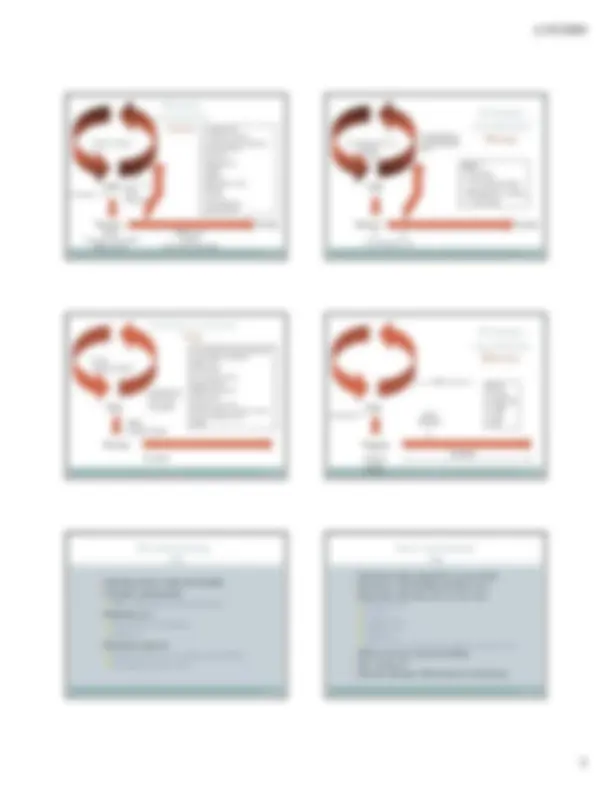




Study with the several resources on Docsity

Earn points by helping other students or get them with a premium plan


Prepare for your exams
Study with the several resources on Docsity

Earn points to download
Earn points by helping other students or get them with a premium plan
Community
Ask the community for help and clear up your study doubts
Discover the best universities in your country according to Docsity users
Free resources
Download our free guides on studying techniques, anxiety management strategies, and thesis advice from Docsity tutors
Material Type: Lab; Professor: O'Toole; Class: Dis of Food Anim/ Horses; Subject: Pathobiology; University: University of Wyoming; Term: Spring 2009;
Typology: Lab Reports
1 / 4

This page cannot be seen from the preview
Don't miss anything!



1
D I S E A S E O F F O O D A N I M A L S A N D H O R S E D. O ’ T O O L E D E P T V E T S C I E N C E S P A T B 4 1 1 0
1/15/
2
1/15/
Your production records Neighbors/family Veterinarian Stock Growers/Wool Growers
3
Industry publications Standard textbooks (e.g., Merck veterinary manual)
Vaccine, feed and drug manufacturers Use them but be skeptical
1/15/
Closed herd insofar as possible Know what you buy Isolate sick/post-abortion animals Investigate/control unusual disease events When you or a neighbor has a wreck, learn from it Check incoming animals for diseases of concern
4
Check incoming animals for diseases of concern Quarantine purchases Good fences Secure dead pile away from traffic areas Control trash and junk Address issues of concern: Toxic plants Toxic soils (selenium) Interactions with disease-vector wildlife and rodents
1/15/
Resistance to endemic infectious agents Acclimated to climate/geography
5
Genetic: consistent “phenotype” Generally: present at birth (or abortion) - first year of life If purebred: breed society web pages/journals If AI, contact originator of semen Discuss with veterinarian: is it genetic? Bring to D-lab for workup 1/15/
6 Currently used for producing protein drugs for human use Potential for producing animals resistant to specific diseases
1/15/
Overseen by FDA No required label as transgenic 21% public does not want GE animals entering marketplace as food (2008)
a. Milk protein promoter DNA b. Therapeutic protein gene c. Terminator sequence d. Other DNA sequences
Disinfectants 7
Anti-parasitic drugs
Anthelmintics: nematodes (worms) Coccidiostats/coccidiocidal (coccidiosis) Topical or systemic compounds (lice)
8
Treatment of ill animals vs. entire herd Parasitic diseases tend to be HERD diseases Prevention: Dose on entry into feedlot Dose, then move Strategic use during season – e.g., at turnout, and/or in fall 1/15/
Vaccines
Modified live vaccine (MLV) vs. inactivated (killed) vs. subunit products
In some diseases, you can vaccinate during outbreak
9
“Herd immunity”
Avoid mishandling (heat; cold; contamination)
1/15/
The two major vaccine types
MLV
Inactivated
More boosters
10
1/15/
Why vaccines fail
Disease outbreak due to agent different to one you vaccinated for Strain variation Some agents more than others (e.g., RNA viruses vs. DNA viruses) O h l i
11
Overwhelming exposure Stress No vaccine 100% Assume ~80% of vaccinated animals protected Dependence on “herd immunity” If you suspect genuine vaccine failure, take it up with your veterinarian, biologics manufacturer, and/or USDA CVB
1/15/
Vaccines do not exist for all infectious agents 12
TB and Johne’s Scrapie and BSE Caseous lymphadenitis (“thin ewe syndrome”) Tularemia
1/15/
Brucellosis; FMD; BTV; anthrax
Rabies
Many sheep/goat vaccines
EPM; foot rot; human stupidity
Using a D-laboratory
Work through veterinarian Bring representative samples of problem: Live terminally affected animal > freshly dead animal > field necropsy samples > rotten carcass Garbage in = garbage out Try to be patient – it often takes more than one carcass to
19
y p sort out a problem, esp. abortions/perinatal death/CNS disease Use laboratory familiar with local problems/production systems Give a history – that guides the process List YOUR concerns If report does not make sense, talk to diagnostician (or have veterinarian do so) and discuss – that’s how we learn
1/15/
Your job is keep a lid on them, not eliminate them You will see BRD before you see FMD or BSE
20
Simpler is better Do what is practical and you can sustain over the years
1/15/